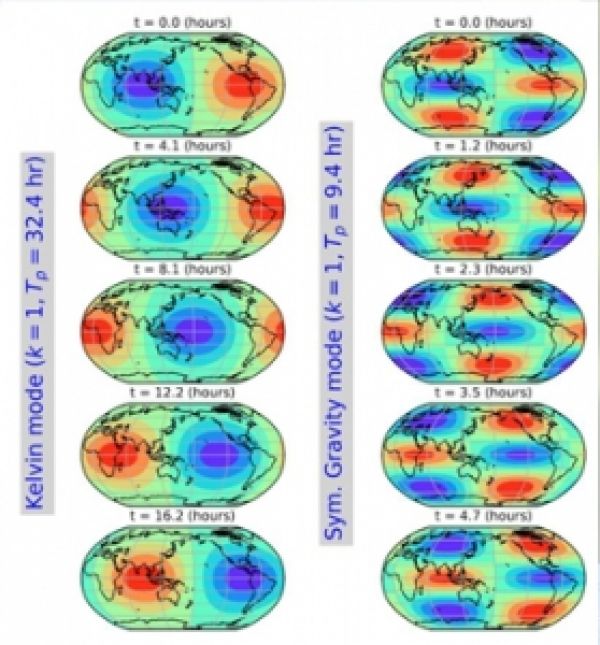A ringing bell vibrates simultaneously at a low-pitched fundamental tone and at many higher-pitched overtones, producing a pleasant musical sound. A study, published in Journal of the Atmospheric Sciences, by scientists at the University of Hawaiʻi at Mānoa and Kyoto University, shows that the Earth’s entire atmosphere vibrates in an analogous manner, in a striking confirmation of theories developed by physicists over the last two centuries.
In the case of the atmosphere, the “music” comes not as a sound we could hear, but in the form of large-scale waves of atmospheric pressure spanning the globe and traveling around the equator, some moving east-to-west and others west-to-east. Each of these waves is a resonant vibration of the global atmosphere, analogous to one of the resonant pitches of a bell.
The basic understanding of these atmospheric resonances began with seminal insights at the beginning of the 19th century by one of history’s greatest scientists, the French physicist and mathematician Pierre-Simon Laplace. Research by physicists over the subsequent two centuries refined the theory and led to detailed predictions of the wave frequencies that should be present in the atmosphere. However, the actual detection of such waves in the real world has lagged behind the theory.
Continue reading at University of Hawaiʻi at Mānoa
Image via University of Hawaiʻi at Mānoa


